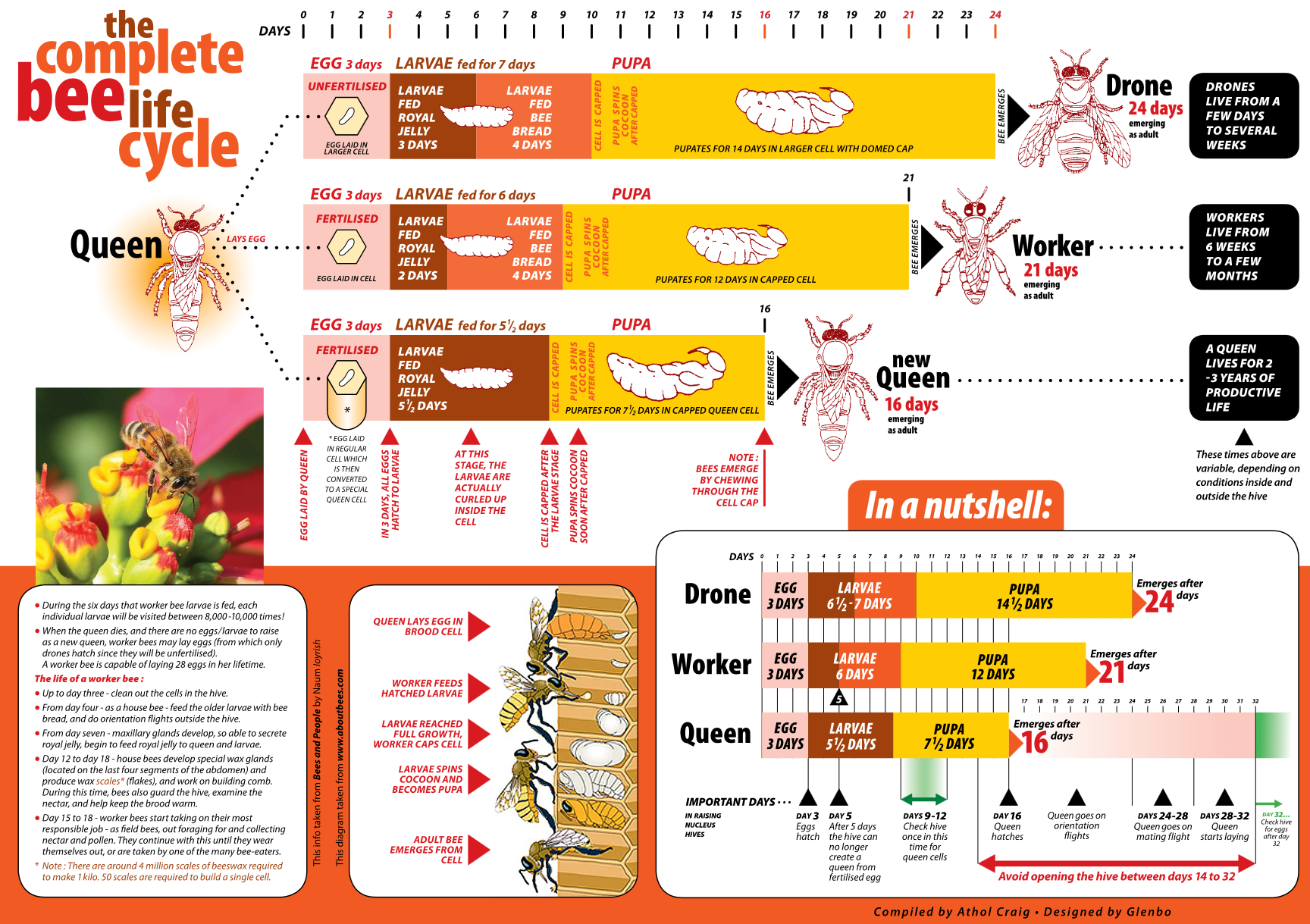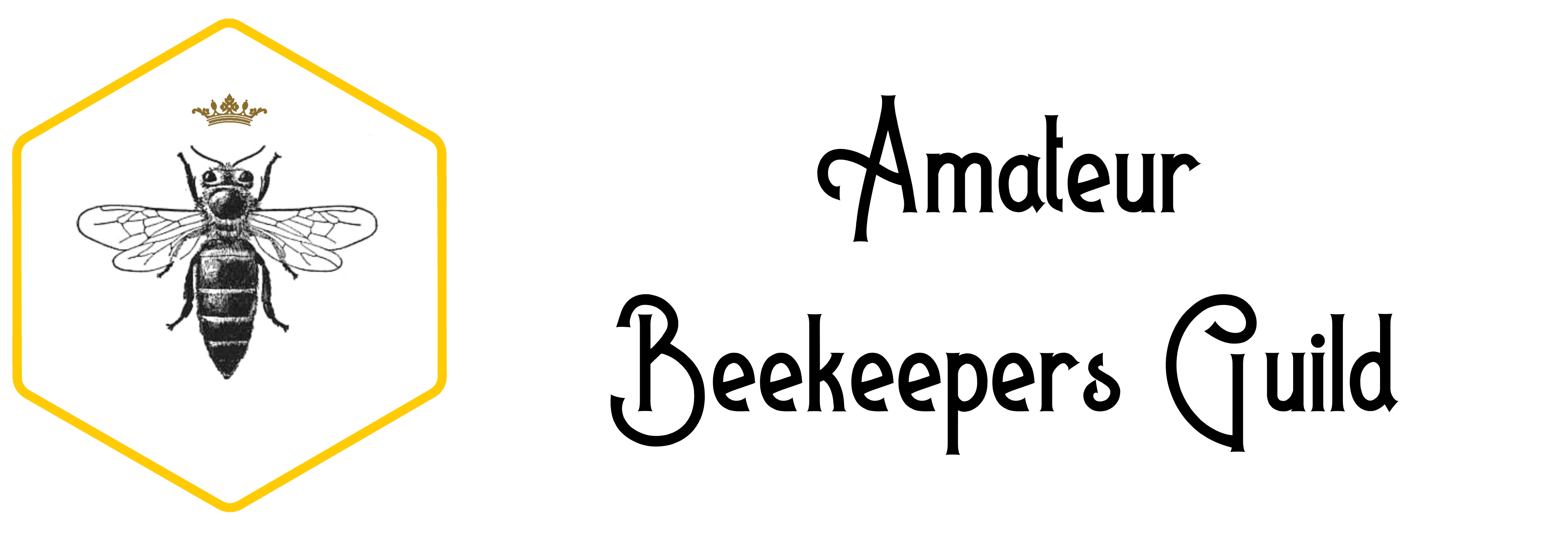The history of the bee
The honeybee is a highly sophisticated insect that has evolved over millions of years. The earliest recorded Bee was found in Myanmar. It was found encased in amber and has been dated as 100 million years old. In those early days, the bees were more like wasps, eating other insects rather than nectar and pollen.
Today bees live all over the world and there are approximately 20,000 species. These range from the giant leaf eating bee, which is over 3cm long to the tiny dwarf bee which is just 2mm long. The honeybee is just one of these species. Most other bees do not live in colonies preferring a more solitary existence.
As well as crop pollination scientists believe that bees are responsible for the rich flower diversity we enjoy today. Most flowering plants cannot self-pollinate and pollination that relies on the wind to carry their seed is not very efficient, so flowers evolved with bright colours and markings to attract bees and to ensure that they were rewarded for the pollination service provided them with nutritious nectar.
For early man, discovering honey was as life changing as the discovery of fire. For the early hunter gatherers who hadn’t yet developed the beesuit and veil, collecting honey was as painful as picking up a burning stick. However, the bravery was worth it because it seems humankind had, in preparation, already developed a sweet tooth.
Honey was the most important sweetener for food and alcoholic drinks in ancient times. So important were these activities that parents named their children after the bees. Both Deborah and Melissa mean “bee”, in Hebrew and Greek respectively. It has been sought as an antiseptic and sweetener for at least 100,000 years.
In fact it wasn’t until Egyptian times that peoples started to keep bees at home. The Egyptian hive design was a simple upturned straw basket called a skep.
Early beehives, such as the skep, were not designed for long term use. The honey couldn’t be extracted without destroying the hive and therefore the colony. The system only worked if the colony produced enough bees to create a swarm, which would be caught and go on to provide the honey in the following year. Otherwise, each year a new swarm of bees had to be caught. There was a desperate need for a way of keeping the same colony of bees year after year.
A breakthrough discovery in beekeeping was made by a man called Lorenzo Langstroth. He discovered that bees would keep a ‘bee sized’ pathway clear within a hive if it was between 6 and 8mm wide. He named the discovery ‘spazio di ape’ (or ‘bee space’ in English). This discovery was important because it led to the development of hives with moveable frames of comb. This allowed the beekeeper to remove comb and honey without destroying the hive. It also enabled the beekeeper to start manipulating the colony; helping it develop and grow. This discovery is often sited as the start of modern beekeeping.

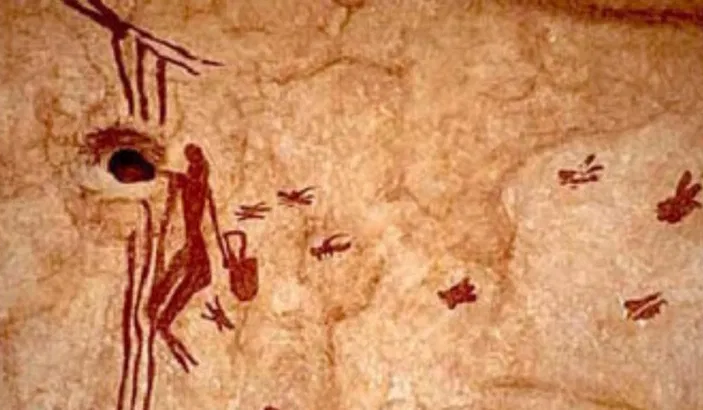
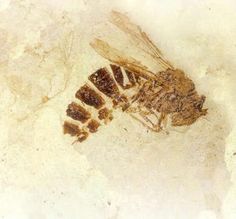
The Who’s Who of the bee colony
The Queen – 1 per colony
The queen bee is the leader of the bee colony. She is the only fully mature female bee in the colony and is usually the mother of all the other bees. The queen is recognisable from other bees because she is the longest bee in the hive. Her wings extend about half the way along her abdomen, which is pointed at the rear. Her head is proportionally small for her body.
The queen’s main purpose in life is to reproduce. A good queen will lay around 2,000 eggs per day. She is, in fact, a terrible mother, having completely lost any instinct to care for her young. The queen relies on the female worker bees to raise her young. She controls the workers’ behaviour by producing pheromones which affect their behaviour.
The Workers – 10,000 – 50,000 per colony
The worker is the smallest bee and is about half the weight of the queen and drone. The abdomen is pointed and the wings are short. Female worker bees literally work themselves to death over the course of their lives. They provide food for larvae, drones and the queen bee and build the wax honeycomb that forms the hive’s integral structure.
In fact, they are model citizens – they clean, ventilate, defend and repair the hive, and most ingeniously of all worker bees are experts in air conditioning. They keep the hive at a constant temperature of around 34’C. If the colony is too hot, they douse their bodies in water and bring it into the hive. They then work together to fan the air with their wings, thus bringing the temperature down by evaporation. In cooler times, they huddle together around the brood of eggs to keep it warm. Once a worker bee reaches the end of her useful life, she drops dead, to make way for new, younger workers to emerge.
The Drones – 1000 per colony
A drone is a male bee. It is about the same size as the queen but is much more squarely built. His wings completely cover his abdomen and his large round head is distinctive for its two eyes which meet at the top. He has no sting. Male bees appear to have a very easy life. They do not work in the hive, do not forage for food, cannot defend the hive (as they have no sting) and are looked after by the workers who feed them honey. Their one purpose in life is to mate with the queen, after which they die. They do not survive over winter and any that are left in the hive in the autumn will be escorted out by the workers.

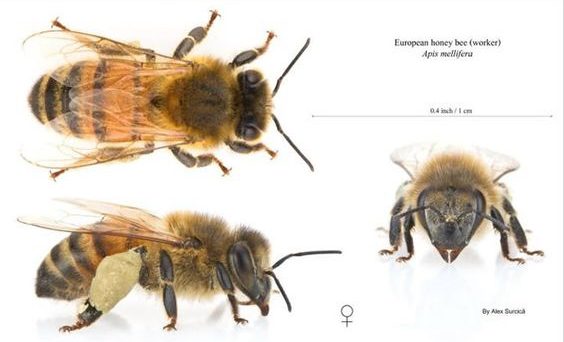
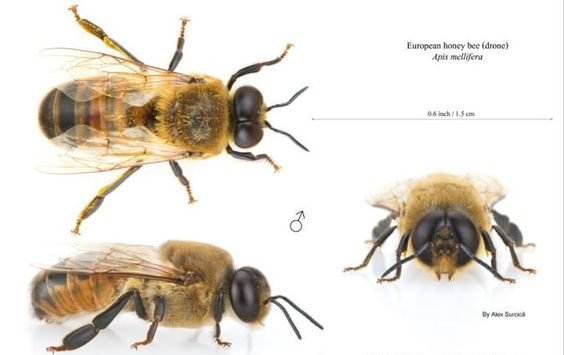
The role of the beekeeper
The role of most beekeepers is to provide a comfortable home for a bee colony and to nurture it while disturbing it as little as possible. It’s good to think of bees as being wild. Even though you can keep them in your garden – it’s impossible to stop them leaving if they want to. To be a successful beekeeper, you must understand the natural instincts of the bee and the organisation of the hive. The activities of beekeepers today are increasingly important as the numbers of truly wild, unmanaged colonies has declined due to pollution and the destruction of habitats in the wild.
Your mission as a beekeeper, should you choose to accept it, would be to help the colony to grow strong and healthy. If successful, the colony would produce more honey that it requires and you would be able to harvest the excess. There are two main types of beekeepers in the world:
Amateur Beekeepers
An amateur beekeeper might have anywhere between 1-40 hives. Over this number and you have to start spending all your time with the bees.
Commercial Beekeepers
Commercial beekeepers typically have over 40 hives and spend most of their time tending to them. They may be keeping bees to produce honey or hiring the bees out to farmers for crop pollination. Hiring colonies has become a huge business – especially in America where some bee farmers have literally thousands of hives which they move to wherever they are needed.

Bee Anatomy
Bees are amazingly efficient honey producing insects. All bees are made up of three distinct parts, the head, thorax and abdomen. Like most insects, the bee has a strong exoskeleton (i.e. it has its skeleton on the outside of its body).
The Head – The head contains the eyes, mouth and antennae which are used for communicating. Although everyone knows that bees have a sting – did you know that they have a sophisticated tongue to taste the quality of nectar?
The Thorax – The thorax consists of three segments below the head. The first bears the first pair of legs. The second bears the second pair of legs and the first pair of wings and the final segment bears the third pair of legs and the second pair of wings. The wings move at an amazing 11,000 times per minute and can carry the bee up to 12 miles an hour. All segments are covered in hairs which are long and feathered in the worker for collection of pollen. The drone has shorter hairs and the queen has only a few.
The Abdomen – The abdomen contains the bee’s digestive system, honey sack and, in the females, the reproductive organs and sting. The honey sack can hold approximately 0.25ml – so it takes a lot of flights (approximately 20,000) to create even just a single jar of honey.
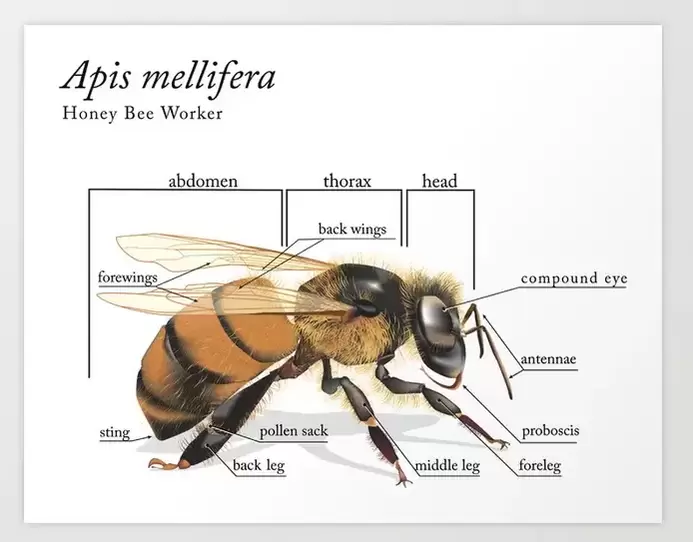
What do bees forage for?
Bees are fantastic foragers and pollinators. The bees will fly over three miles away from their hive and continually adapt to the changing season and plants. A typical bee will make 3,000 visits to flowers in a day and will keep visiting the same area until all the nectar is finished.
The waggle dance
In a colony, over half the bees will spend their time foraging. Within these foragers, there is a small number of elite ‘scout bees’. The scouts spend their time looking for good sources of food. Once they have found a good source of quality nectar, they return to the hive and tell the other bees where to find it. They do this by performing the famous waggle dance.
The scout bee stands on the honey comb and dances. The scout also shares some of the nectar, to let the other bees know the quality of the nectar that they have found.
What plants are the best for your bees?
There are lots of plants that are fantastic for bees. As a general rule, you should try to plant as wide a variety as possible. You should aim to plant them in clumps to make it easier for the bees to find and if possible choose local plants rather than exotic ones.
An Essential Pollination Service
Pollination is the process by which many plants reproduce. It involves the movement of pollen between plants – i.e. the male gametes (or sperm) is transferred to female gamete. The honey bee is one of many essential pollen transporters for the plants. They are responsible for the pollination of a wide variety of crops, fruits and flowers.
How does pollination work?
The plants and bees have a symbiotic relationship. The plant provides food for the bees in the form of nectar. As the bee collects the nectar it brushes against the anthers of the plant and pollen grains stick to the bee’s hairy body. When the bee then visits another plant some of the pollen on its body will rub off on the stigma of the plant. By this process bees pollinate about a third of our food.
Pollination Services
Unfortunately, the number of wild bee colonies has decreased over many years, as their natural habitat has been cleared to make way for farm land. Now, many farms often have to hire bees to help pollinate their crops. This is especially important in America where about 50% of all beehives are transported to California each year to help pollinate the almond orchards. The beehives are loaded onto pallets and then transported 1,000s of miles across the country on trucks.

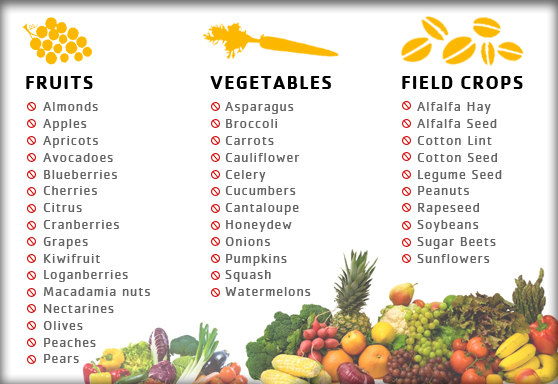
The birds and the bees
The colony population expands and contracts with the season. A typical colony will build up its population using the nectar of the early flowers in spring. Then with a large workforce, it can harvest the higher quality nectar in the summer, which it will store over winter.
From September onwards, the colony is dedicated to the development of the brood and the queen increases her egg laying rapidly, peaking around December. The ratios of adult bees to brood at this time is around 2 to 1. The amount of food that is required by the colony will, at this point, remain static and the bees will be intensively storing nectar.
Temperature Control
The temperature of the brood is critical and must be kept within the range of 32-36 degC. They do this by either fanning their wings to cool the hive or by metabolizing honey to heat it. The brood also produces heat as the larvae and pupae grow.
Bee eggs are parthenogenetic which means they will hatch even if not fertilized and this is the deciding factor as to whether the egg will hatch a male or female bee. Unfertilised eggs will produce males, known as drones. Fertilised eggs will produce females, which will be either workers or queens depending on how they are fed by the workers. There are no queen eggs or worker eggs, they are exactly the same; the difference occurs in how they are fed when they hatch.
Three Types of Cell
The type of cell the egg will be laid in depends on whether the egg is fertilized and whether the egg is destined to be a new queen. The three types of cell are as follows:
- Drone cells – Large hexagonal with a domed cap.
- Worker cells – Small hexagonal with a flat cap.
- Queen cells – Large, thimble shape and hang vertically.
The queen measures the cell size with her front legs and either adds sperm to fertilise the egg ( if it’s a queen or worker cell) or simply lays an unfertilised egg (if its a drone cell). When the egg hatches into larvae, the nurse bees start to feed it.
The nurse bees feed the larvae with royal jelly (bee milk). This is masticated pollen and is an extremely nutritious food, the cell is regularly topped up for the first three days, thereafter it is fed less frequently until the cell is capped.
The queen larvae are fed as much of this as possible until the cell is capped. This difference produces a strong queen with properly developed ovaries.
Drones are thought to be fed a similar ration to the workers. Incidentally the cell caps are a mixture of pollen and wax which is breathable.

Swarms
Swarming is the bees’ way of multiplying. It is a completely natural occurrence that every beekeeper will encounter at some time or another. A successful colony will breed and become large. At this point they will decide to split and create another colony. The bees will start to produce a new queen and the old queen leaves the hive with around a third of the colony.
Signs that the bees are about to swarm
There are several things that indicate that a colony might swarm:
1. They start to produce queen cells
2. There is no more room in the brood box
3. Clusters of bees appear near the entrance of the hive
When a hive is filled with honey and has no room for new eggs, worker bees search for a suitable place to set up a new colony. The queen takes about half the worker bees and starts a new colony in the new location. A new queen is left behind with the other half to continue the old colony.
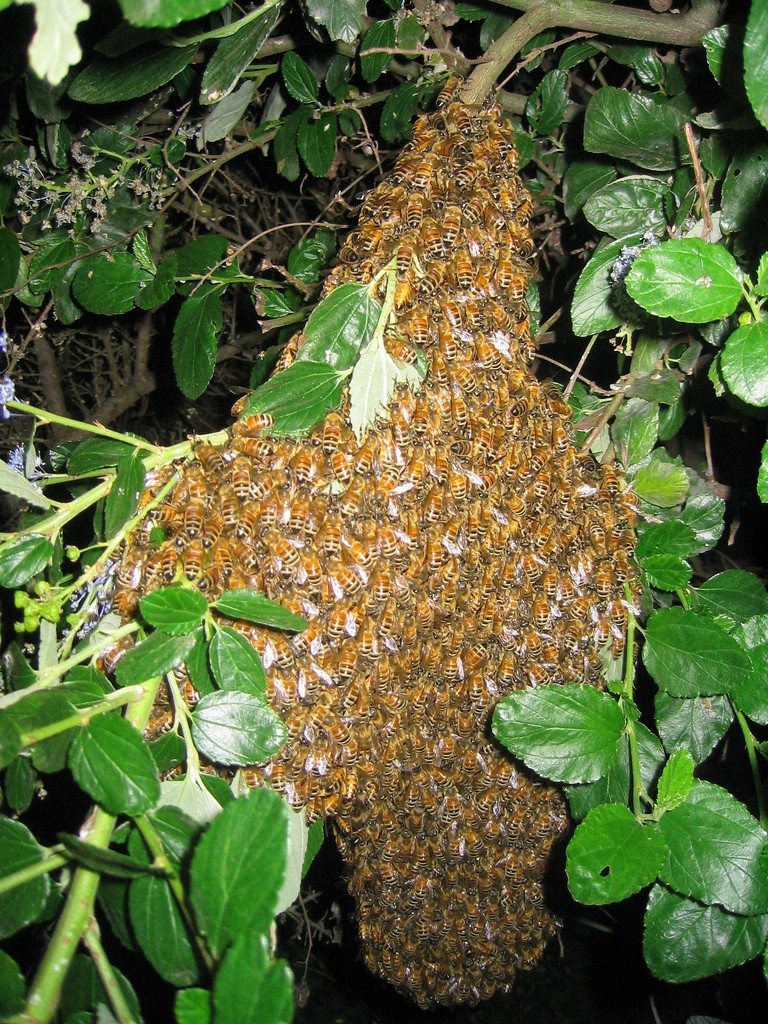
Life of a bee
All bees start their lives as eggs. These grow into larvae and then pupate into fully formed bees. The queen, drones and worker bees take different amounts of time to complete the stages. This is useful to know when you come to inspect your hive and need to know how long ago the queen has laid a particular type of egg.
